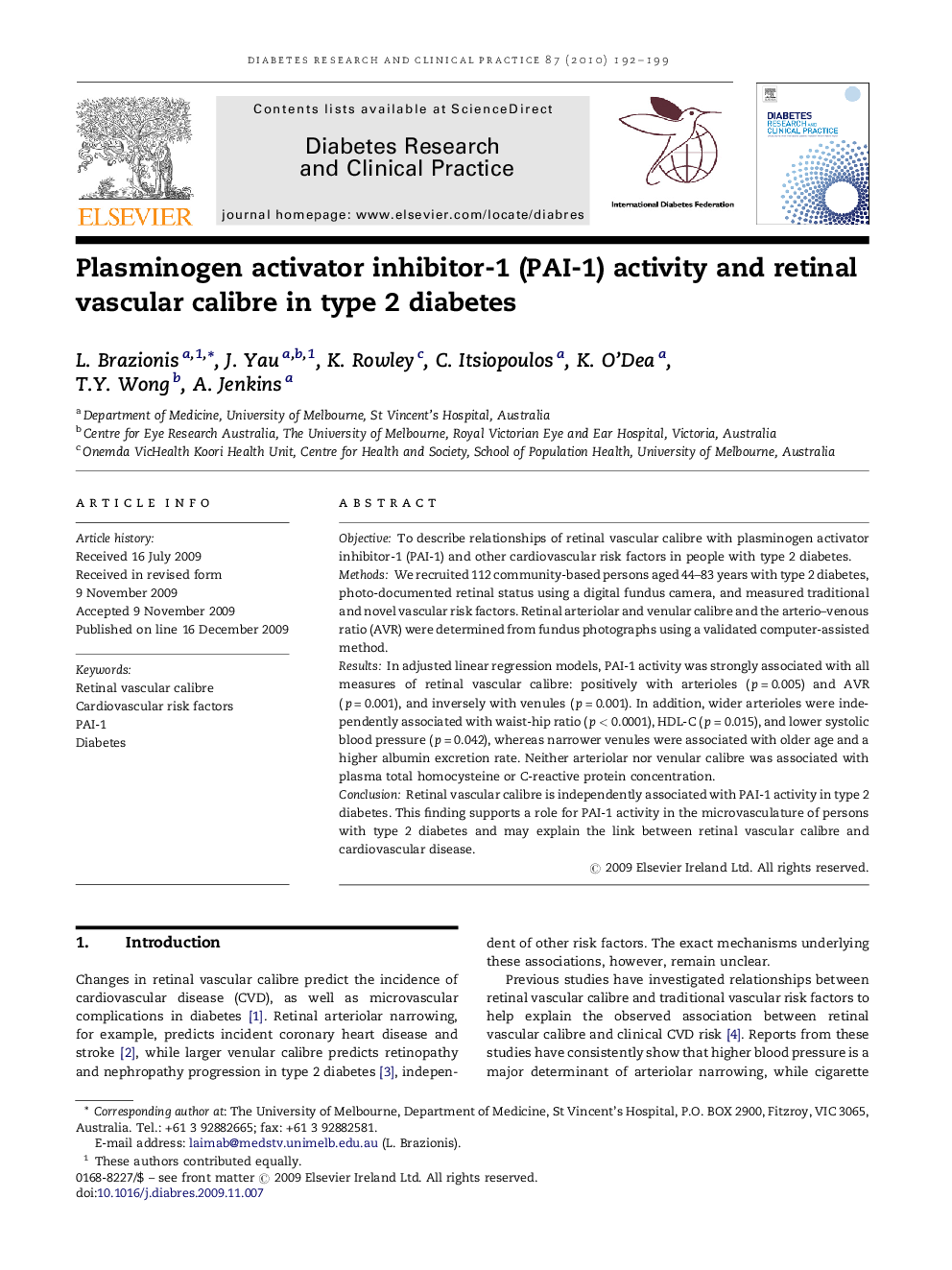| Article ID | Journal | Published Year | Pages | File Type |
|---|---|---|---|---|
| 2797667 | Diabetes Research and Clinical Practice | 2010 | 8 Pages |
ObjectiveTo describe relationships of retinal vascular calibre with plasminogen activator inhibitor-1 (PAI-1) and other cardiovascular risk factors in people with type 2 diabetes.MethodsWe recruited 112 community-based persons aged 44–83 years with type 2 diabetes, photo-documented retinal status using a digital fundus camera, and measured traditional and novel vascular risk factors. Retinal arteriolar and venular calibre and the arterio–venous ratio (AVR) were determined from fundus photographs using a validated computer-assisted method.ResultsIn adjusted linear regression models, PAI-1 activity was strongly associated with all measures of retinal vascular calibre: positively with arterioles (p = 0.005) and AVR (p = 0.001), and inversely with venules (p = 0.001). In addition, wider arterioles were independently associated with waist-hip ratio (p < 0.0001), HDL-C (p = 0.015), and lower systolic blood pressure (p = 0.042), whereas narrower venules were associated with older age and a higher albumin excretion rate. Neither arteriolar nor venular calibre was associated with plasma total homocysteine or C-reactive protein concentration.ConclusionRetinal vascular calibre is independently associated with PAI-1 activity in type 2 diabetes. This finding supports a role for PAI-1 activity in the microvasculature of persons with type 2 diabetes and may explain the link between retinal vascular calibre and cardiovascular disease.
